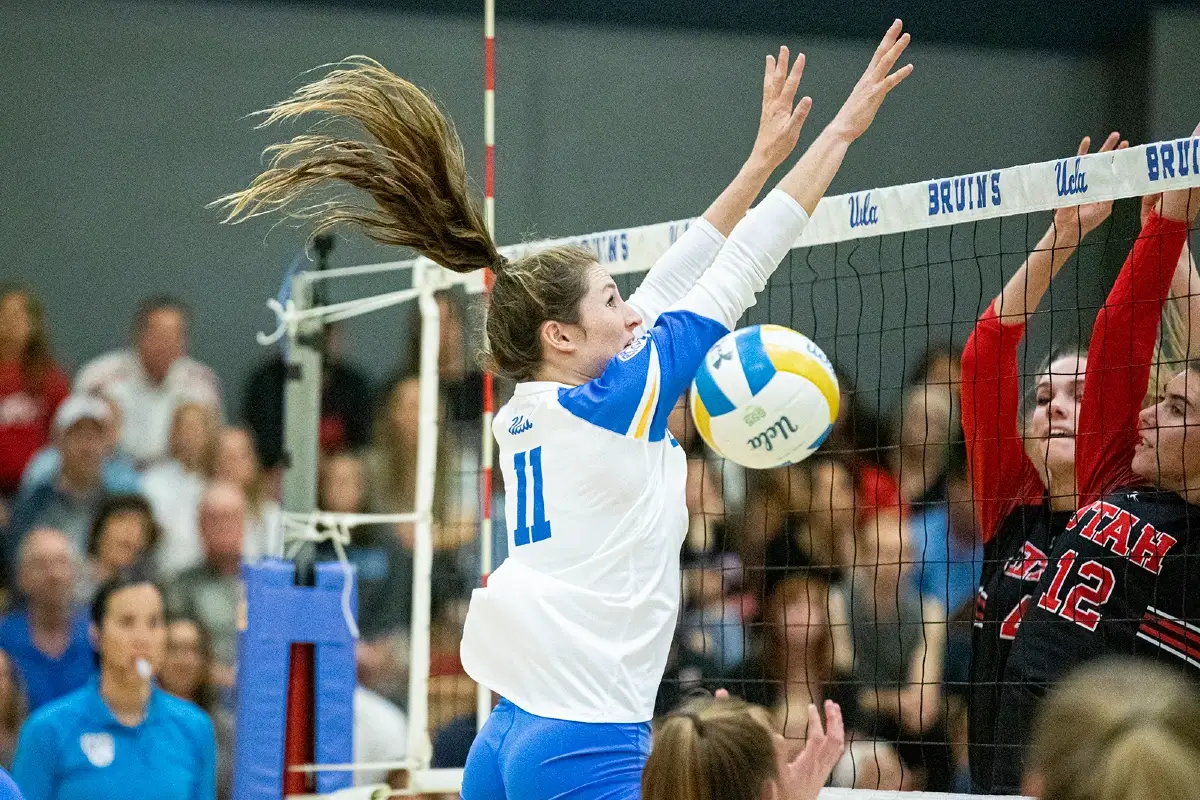Last Updated: October 19, 2023
Blocking is the cornerstone of defensive play in volleyball. However, as much as this is a fantastic technique, a single error can prove costly. Errors come in many forms – some are due to poor technique while others emanate from inexperience. Whatever the case, the earlier one identifies these potential blocking mistakes and deals with them, the better.
Let me analyze some of the most common errors that players need to avoid when blocking an attack in the game of volleyball.
Common Blocking Mistakes in Volleyball

1. Being Impatient on the Block
Volleyball is a game that largely depends on your ability to predict your opponent’s next move. However, this can work against you especially if you’re impatient when blocking.
For example, you might have noticed your opponent’s tendency to hit the ball diagonally essentially evading your block. Out of frustration, you might find yourself moving your hands to prevent a diagonal strike. Now if you do this too quickly, your opponent will be able to easily predict your next move and thereby take advantage of you.
Sure, you want to be aggressive on the pitch and work hard for every ball but you need to have a strategy and not be impatient. Take your time to study your opponent and avoid overreacting especially when under pressure.
2. Jumping on the Block Too Early
Normally you want to make the best jump possible so you can position your hands optimally to block the attack. However, things can go terribly wrong if you happen to jump a little too early. Jumping too early only gives the attacker clues on where you are going to block them. It’s that simple. You’re only making the job easier for them.
A good attacker only needs the slightest sign about where you are shifting your block to. With that information, they can easily change their mind midway through the attack and take advantage of your vulnerabilities.
Don’t give your opponents these chances! Wait with your block.
3. Failing To Read the Attacker
If you want to become a great volleyball defender you need to learn how to read the hitter. Any player with the ability to anticipate things correctly will have a clear advantage over those who don’t.
It all begins with watching the ball as it gets passed and quickly determining the intentions of the hitter.
The attacker’s body can tell you a lot about their potential next move. For instance, you can tell when an attacker is planning to spike at an angle by checking where their shoulders are positioned facing.
An attacker who is facing away from the net is unlikely to spike. However, if the same attacker is directly facing the net with their feet and hands pointing toward that direction, you can pretty much start preparing for a down-the-line shot.
One thing you always need to keep in mind is that more often than not, the ball tends to follow the direction the attacker’s feet are facing.
So, keep your eyes on those as well as their arm swing as both have some crucial clues.
4. Poorly Coordinated Double Block
A double block happens when two players work in a synchronized fashion to deflect a ball. It is a really good strategy as it allows for wider hand coverage and can help prevent those nasty angle spikes.
However, double-blocking requires discipline. First, you need to make sure your jump is well coordinated and controlled. You don’t want a scenario where one player jumps higher than the other. Likewise, you don’t want a scenario where the two players place their blocks meters apart instead of creating a close-knit setup.
Recommended read: Unveiling the Secrets of Successful Volleyball Defense
Undisciplined play will have blockers jumping all over the place leaving all manner of weaknesses on the double block.
If possible, try to jump at the same time and create a compact block to increase your chances of a successful block.
5. Poor Hand Position
It’s always important to get in position whenever you’re jumping for a block. More often than not, we have seen players who approach a block with their fingers tightly together perhaps to protect themselves from the impact of the ball.
While it is understandable that the ball can sometimes hurt your fingers, that should be no excuse to block with your fingers close together. That alone reduces your area of coverage.
Likewise, you want to desist from the mistake of defending the ball with your fingers unreasonably wide apart as this could create pockets of spaces that the hitter can take advantage of.
When practicing blocking, you want to focus on keeping your hands outstretched, with the fingers spread but keeping them rigid. This helps slow down the opponent’s hit while also reducing the risk of injury.
6. Not Getting Your Footwork Right
Like in boxing, footwork is extremely important for a good game of volleyball. Particularly with blocking, you want to get the right footwork techniques. Simply put, the better your footwork, the higher your chances of blocking the ball to perfection.
Unfortunately, most players think footwork is not important so they solely focus on jumping as high as possible hoping to block the ball.
However, you need to know that the larger the physical distance between the initial launching point and where you meet the ball, the higher the likelihood that the block will be weak. You want to keep this distance minimal.
7. Accidentally Touching the Net
It is against volleyball rules to touch the net when the ball is in play. Touching the net during a block is a no-no. Unfortunately, blocking requires one to be physically close to the net, and, therefore, the risk of committing that offense is always high.
In fact, in some cases, players even end up directly hanging on the net after losing their footing during a block. This happens because sometimes we try too hard to block the hitter or because of poor technique.
You don’t want to swing your arms as you approach a block. Likewise, you want to improve your bounce technique because a poor one can have you conceding some unnecessary points.
Also read: Drills for Improving Your Volleyball Defense
So, watch your technique. Avoid taking excessive risks and above all be keen not to touch the net when blocking.
Conclusion
A great defensive player is one who can stop a hitter in their tracks without touching the net. It takes time to master the blocking technique and, therefore, you should always note the potential weak points that could work against this quest. Hopefully, you’ll find the analysis above constructive and useful in making you an even better player or tactician.
